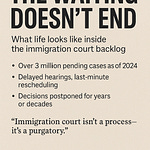Read the post here
🧭 Overview
Cancer is a universal fear—and a multi-billion-dollar industry. This THX case study examines what role government should play in funding cancer research, when private enterprise should take over, and how we ensure the public actually benefits from its investment.
Using the THX frameworks, we explore the tension between innovation and equity, risk and reward, breakthrough and affordability.
✍️ Key Topics Covered
The role of the NIH, NCI, and public funding in cancer breakthroughs
Private sector innovation—and the pricing controversies it creates
A utility-by-utility breakdown of what each sector does best (and worst)
A proposal: Build and Hand Off—with accountability
🧠 Who This Is For
Health policy makers and public officials
Patients, families, and caregivers invested in cancer treatment access
Researchers, medtech entrepreneurs, and pharma insiders
Citizens who believe public investments should generate public good
🧾 Notable Facts & Stories
NIH invested over $7B in cancer research in 2023
CAR-T cell therapy, the Cancer Genome Atlas, and mRNA vaccines began with public funding
Drugs like Provenge and Imbruvica triggered pricing backlash despite NIH-supported origins
💬 Reflection Prompt
Should a drug developed with taxpayer dollars be priced out of reach for those same taxpayers?
What’s the cost of discovery—and who pays for it in the end?













Share this post